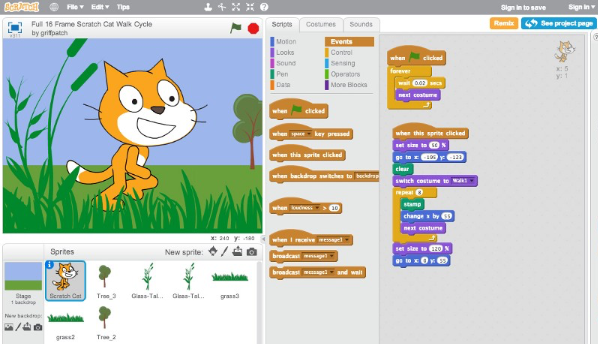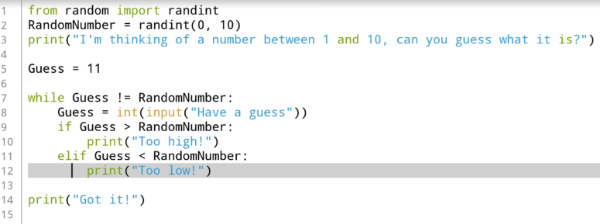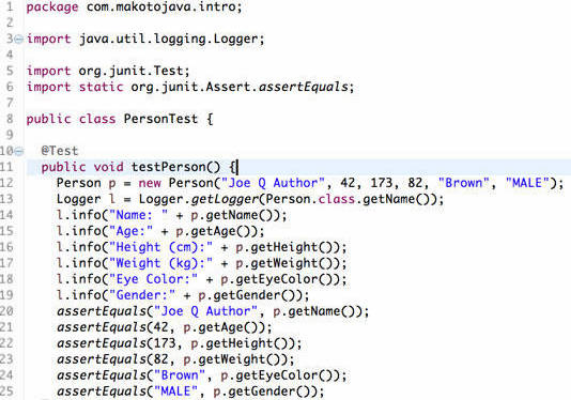This guide will help:
- Local libraries host coding classes.
- K-12 students prepare for a career in STEAM.
- Women in tech further their careers and education.
What is digital literacy?
The simple definition of digital literacy is the ability to navigate a website or app and be able to perform common computer tasks. In today’s age, digital literacy goes beyond knowing how to use a computer. Digital literacy also refers to the deep understanding of the technology that surrounds us and having practical skills such as coding and software knowledge. Programming is being integrated into K-12 education because it teaches students computational thinking, logical reasoning and problem solving skills. More schools are encouraging students to pursue careers in science, technology, engineering, art and math (STEAM). With many industries today requiring some form of digital literacy, children that learn computational thinking early are at a greater advantage.
Coding resources and programs
Here are some resources and programs from organizations that can help you set up your own coding class at your local library.
Code.org
code.org
This non-profit organization offers free curriculum and projects. They provide the leading curriculum to K-12 schools that teach coding and helped develop the K-12 computer science framework. Code.org also organizes the annual Hour of Code campaign. This organization’s online courses are catered to grades K-12 but provide resources on how to continue coding after high school.
Code Club
codeclub.org
Code Club organizes safe coding environments for 9-13 year olds wanting to learn how to code for free at schools and community centers. You can search by ZIP code or city for a local Code Club near you. If there’s not a Code Club in your community, you can start one. Their step-by-step project guides make it easy for anyone to learn how to code and set up a club. If you need help finding volunteers to run a coding event, you can also advertise for volunteers on their website.
CoderDojo
coderdojo.com
CoderDojo is made up of a community of free local programming clubs. You can use CoderDojo to search for free resources, find a dojo near you, or start your own dojo. Free projects are available on their website to make it easy to host your own coding dojo in your community.
CodeSpeak Labs
codespeaklabs.com
CodeSpeak Labs is an organization based in New York and Orange County, California. They teach coding to K-12 students during and after school. Students learn to build websites, apps, games and more through different curriculum focused on Scratch, HTML and CSS, JavaScript, Python, robotics and more. They make it easy for interested parents to bring coding to their child’s school by emailing them at coachoc@codespeaklabs.com.
Google CS First
csfirst.withgoogle.com
Google offers free computer science curriculum that’s meant to be easy to teach and fun to learn with video-based activities. Instructors can get a free classroom kit, manage class progress with a dashboard and allow students to save their work.
Hour of Code
hourofcode.com
Hour of Code happens each year during Computer Science Education Week. This hour-long introduction to computer science helps anyone learn the basics and broaden participation in computer science. You can organize an Hour of Code event at your school or community and register the event on the website to spread the word. Hour of Code also has many self-led tutorials online that are free to use.
Glitch
glitch.com
Glitch offers an online code editor where you can learn, create and publish your own web pages in HTML, CSS, and JavaScript. Glitch is free to use and you can invite friends to collaborate live on projects.
How to host coding classes at your local library
STEP 1: Choose a location and setup
Libraries provide a safe gathering place for learning. Some local libraries already have a computer lab in place, making it the perfect learning space for coding. If your local library doesn’t have a computer lab or enough computers available, use a single projected screen, ask your participants to bring their own device or team them up in pairs.
Paired programming is a common practice for introductory coding courses in which two programmers share one screen and work together. The student in front of the keyboard is called the “driver” and the partner helping guide the project is called the “navigator.” Since only one participant has access to the keyboard at a time, have them switch roles every few minutes.
If students are required to bring their own device, try having backup devices if possible. Students might not have the technology needed while other students may be coming from a low-income family. We’ve created a guide for low-income families on how to get free and discounted technology.
STEP 2: Choose a time
Coding workshops should be staggered in the evenings and on the weekends to allow enough time for concepts to sink in. They should also occur in short sessions of about an hour to attract younger participants as opposed to long bootcamp-style workshops.
Many libraries host an Hour of Code event during Computer Science Education Week in December. An hour-long introduction to coding can help broaden participation in computer science.
STEP 3: Recruit volunteers
Librarians can reach out to local tech companies and colleges to get volunteers who are proficient at coding to run the class and inspire students. You can also run a workshop without any prior background in computer science. Many introductory coding courses for youth have an easy self-guided lesson plan you can review before and teach the lesson plan yourself. Google’s Computational Thinking for Educators course can also help instructors familiarize themselves with programming and learn about computational thinking with real world examples.
STEP 4: Choose learning material
Reviewing coding material for your workshop might make you wonder what JavaScript, HTML, CSS, Python, Scratch, Java, C++ and C# mean. These are all examples of a programming language and there are hundreds of programming languages worldwide. Programmers use a formal language to communicate with computers, provide specific instructions, create algorithms and develop software. Each programming language has specific syntax, or grammar, that a programmer must follow. The more a programmer understands the syntax of the language, the more likely the computer will do exactly what he or she wants to accomplish. These are the recommended programming languages for beginners:
Scratch & visual programming languages: When it comes to coding for kids, visual languages like Scratch are the best option. Visual programming languages get kids excited to drag and drop blocks of code to create games, build apps and move characters. Scratch is great for kids that are just being introduced to coding and teaching them basic concepts.

Scratch is better suited for 8-16 year olds and is free to sign up for an account online with a mobile app coming in the future. ScratchJr is great for kids aged 5-7 years old and is available for free on iPads and Android tablets. Another great option for younger kids is Daisy the Dinosaur for iOS devices.
Python: Kids and teens who are interested in pursuing computer science will benefit the most from learning Python as their first programming language. Python has simplified syntax that reads like English and is widely used in the field of computer science, including cybersecurity and artificial intelligence. Python is great if you want to teach the fundamentals of programming such as loops, if-then statements and automation.

Java: Any serious coder will most likely learn Java at one point, as Java developers are in high demand. Java is used by many companies today and is commonly used to build apps for Android. Java is recommended for intermediate students and may be harder for first-time coders to learn.

JavaScript: Students that want to learn about web development should learn JavaScript. JavaScript is not to be confused with Java as they are two very different coding languages. JavaScript is commonly used to make complex web applications, which is why it is used in many jobs. JavaScript is a great programming language to learn but isn’t recommended as a student’s first programming language.

HTML & CSS: HTML is used to create the structure of a static webpage. CSS acts as the make-up of a webpage and transforms the static HTML webpage into a dynamic webpage that users can interact with. HTML and CSS are technically not programming languages, but kids and teens who want to become web developers or web designers should learn HTML and CSS.

STEP 5: Apply for grants
Libraries can seek funding to host coding classes for the public. Grow with Google has collaborated with the American Library Association (ALA) to sponsor the Libraries Ready to Code grant. The ALA will open application periods for the grant and announce it on their website. Libraries will have to go through a request for proposal (RFP) process to be selected for the grant.
Libraries hosting coding classes
Reaching out to libraries that already have coding programs in place can help answer any questions you may have to get started. Below is a list of libraries that offer coding programs.If you are interested in attending a coding class at one of these branches, most libraries will allow you to register in person.
Arizona — Phoenix Public Library
phoenixpubliclibrary.org/ServicesForYou/Computer-Classes
Tech classes ranging from basic computer skills to coding classes are available in the Phoenix Public Library system. Choose a branch to view available coding classes and register online.
California — Irvine University Park Library
ocpl.org/libloc/iup/calendar
Kids can register at the Children’s Reference desk to sign up for free coding classes with CodeSpeak Labs and Code Club. These workshops teach students in grades 2-5 how to program with JavaScript.
California — San Jose Public Library
sjpl.org/coding5k-challenge
Kids and teens can participate in free coding summer camps at the San Jose Public Library. These free courses are part of the Coding5K challenge designed to make free STEAM classes more accessible for K-12 students. During these week-long camps, students will explore concepts in coding, science, technology, engineering, art and math.
California — Sonoma County Library
sonomalibrary.org/coding
Youth coding classes are available for children and teens to help promote STEAM education. Adults who are interested can volunteer to help run coding clubs. This branch participates in multiple programs, such as CoderDojo and Hour of Code.
Colorado — Denver Public Library
denverlibrary.org/ctc-classes
The Denver Public Library makes it easy to search for available coding classes. Choose the class you would like to participate in and click “When is this class offered?” to get information on dates, times and location.
Colorado — Poudre River Public Library District
poudrelibraries.org/classes
There are four different coding programs offered in the Poudre River Public Library District. Students can attend classes dedicated to kids, teens, girls or an eight-week coding course.
Minnesota — Waseca-Le Sueur Library
wasecalesueurlibraries.com/category/classes
This library participates in Hour of Code in December where kids can manipulate Minecraft environments and complete other projects in their Coding Clubhouse lab.
New York — Frankling Square Public Library
franklinsquarepl.org
Summer STEM (science, technology, engineering and math) classes are offered to K-6 students for free at the Frankling Square Public Library. Students will participate in various coding activities and building kits. Upcoming events at the library are posted on their Burbio calendar, but you must register in person for these classes.
New York — Queens Public Library
connect.queenslibrary.org/1078
Queens library staff host coding classes through Google CS First. They are available to students in grades 4-8 with any skill level. Pre-registration is available on their website for interested students.
Organizations that teach coding to women and girls
Only 25% of computing jobs are held by women. The underrepresentation of women in the technology field is the reason why many organizations are committed to helping girls learn how to code and teach women how to advance their careers in the technology sector. Here are some non-profit organizations and programs that promote coding for women and girls.
Black Girls CODE
blackgirlscode.com
Black Girls CODE is an organization that empowers girls of color ages 7-17 to become innovators in STEM fields. They host hackathons and summer camps that provide 5-10 days of hands-on instruction for computer science projects. This organization has locations in Chicago, Dallas, Houston, Los Angeles, Memphis, New York, San Francisco and Seattle. You can register online and even apply for a workshop scholarship.
Girl Develop It
girldevelopit.com
This non-profit organization aims to provide affordable web and software development programs for adult women of all backgrounds. They are currently in 60 cities and growing. Their website offers free curriculum based on web development, HTML/CSS, JavaScript, and PHP/MySQL online.
Made with Code
madewithcode.com
Made with Code is a web-based resource powered by Google that encourages teen girls to learn how to code. Girls can learn how to code online for free by creating Snapchat geofilters, designing a dress, generating visuals and more.
MotherCoders
mothercoders.org
This organization helps mothers with college degrees and work experience further their careers. They offer a 9-week technology training program that was created by moms for moms and offers on-site childcare. Mothers can sign up for weekday and Saturday classes online.
RailsBridge
railsbridge.org
RailsBridge offers free weekend workshops where women can learn to develop web apps in the Ruby on Rails programming language. The organization also teaches HTML and CSS. They have locations all over the U.S. and you can RSVP to upcoming events online.
Techfest Club
techfest-club.com
This organization is based in New York City and aims to connect women in tech, expand career possibilities and find women just like them in the industry. Speakers at their events help empower women to build and advance their careers in tech.
Women Who Code
womenwhocode.com
Women Who Code is a global non-profit organization dedicated to helping women excel in the tech industry. Women can sign up to be a member on their website. Members get access to coding resources, leadership opportunities, a job board, scholarships and conference tickets.
Girls Who Code
Girlswhocode.com
Girls Who Code is a U.S. nonprofit that aims to empower girls to become programmers and engineers. By providing the tools and resources for girls to learn computer science skills, Girls Who Code strives to close the gender gap in technology.
Coding bootcamp scholarships and discounts
A coding bootcamp might be better suited for some students, but tuition costs may be a roadblock for those that can’t afford it. Most of these bootcamps are not eligible for traditional student aid funding. Switchup has compiled a list of over 80 scholarships and discounts available for coding bootcamps. These scholarships and discounts are available to a variety of students, including veterans, women of color and LGBTQ.


